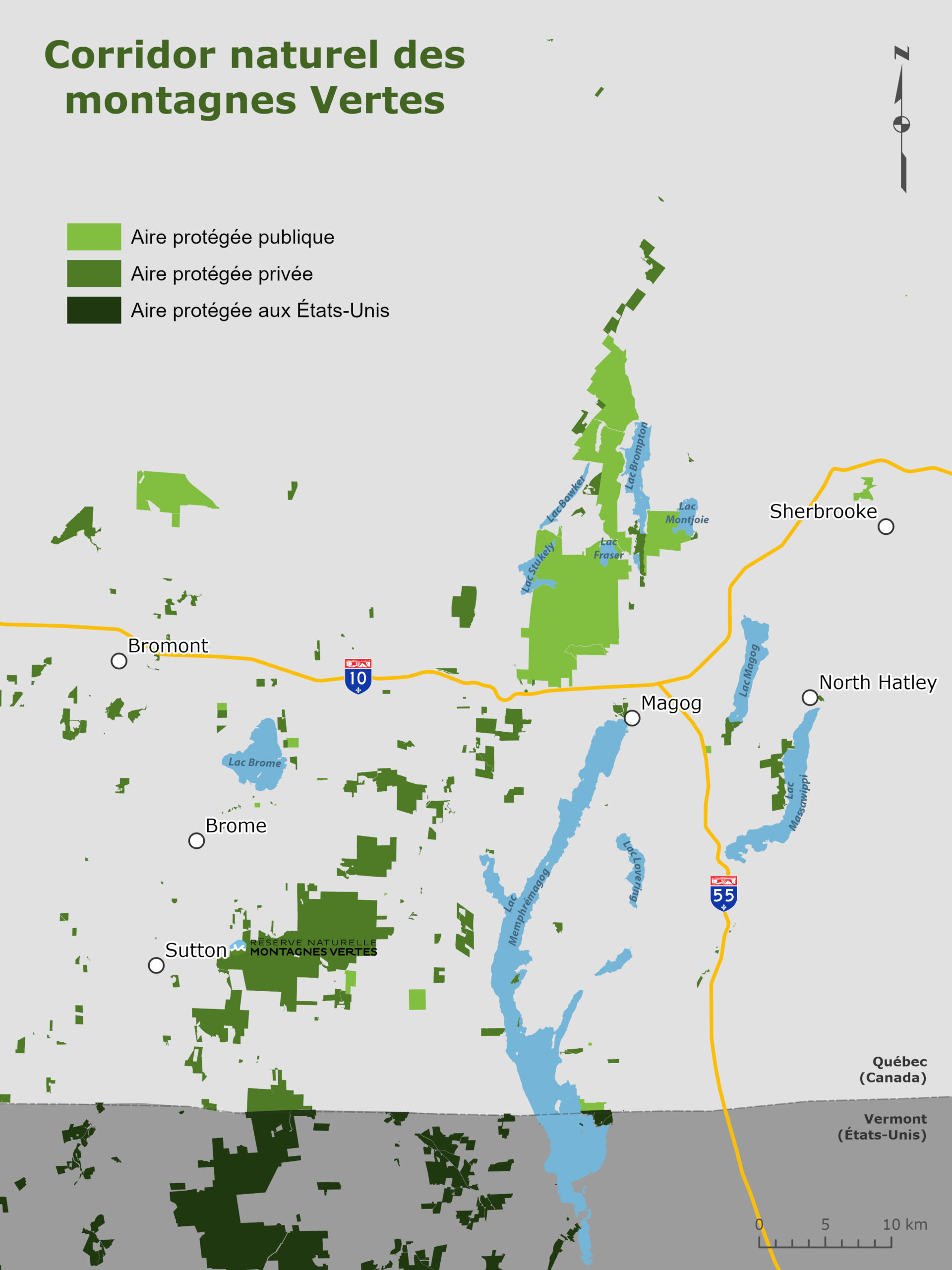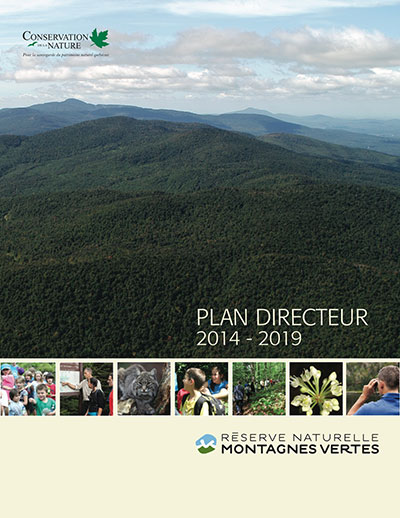Nature reserve status
The ecological importance of this area captured the attention of several conservation stakeholders and led to the creation of the Green Mountains Nature Reserve in 2009.
In 2002, the Quebec government passed the Natural Heritage Conservation Act. This act recognizes, by agreement with the government, private properties with ecological characteristics or natural environments warranting protection, whether permanently or for a minimum of 25 years.
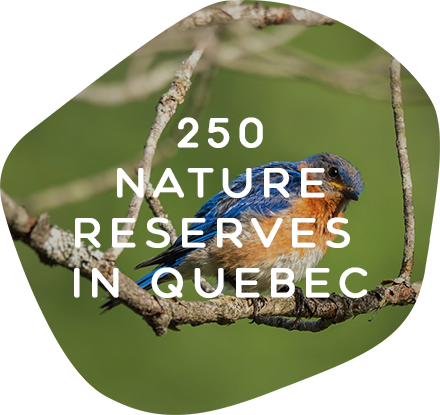
Topography
The rugged terrain of the GMNR features rocky outcrops, rock walls, landslide zones, caves, gorges, and waterfalls. At its centre, the summit area includes several peaks.
This area includes some of the highest mountains in southern Quebec
Identification of peaks
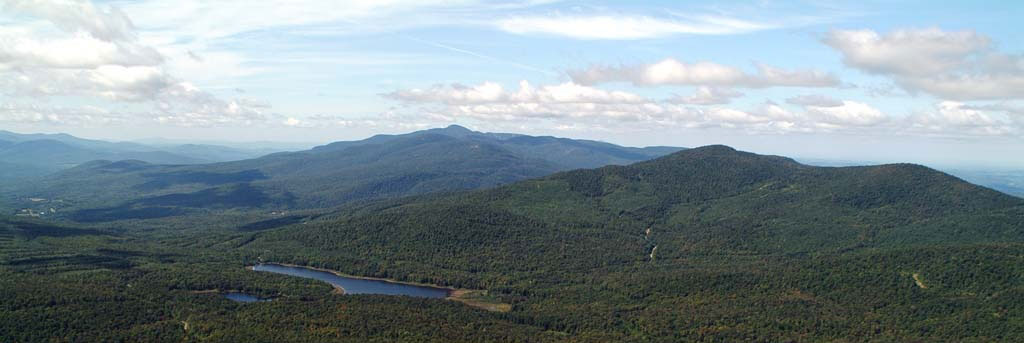
Topography
The rugged terrain of the GMNR features rocky outcrops, rock walls, landslide zones, caves, gorges, and waterfalls. At its centre, the summit area includes several peaks.
This area includes some of the highest mountains in southern Quebec
Identification of peaks
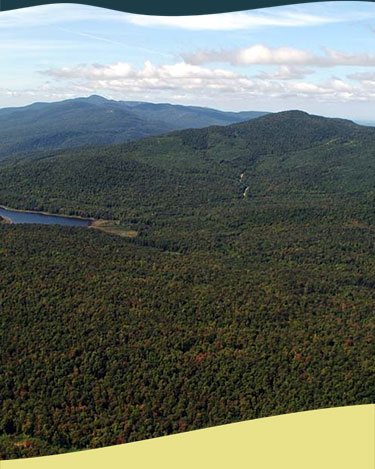
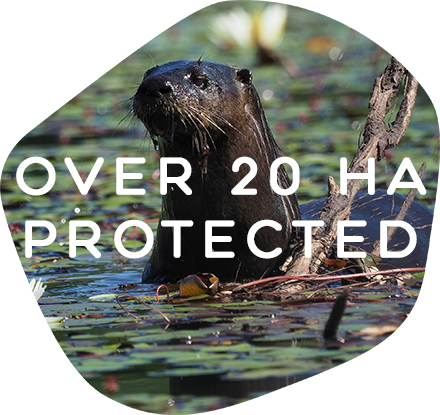
Wetlands and streams
Wetlands play a significant role in terms of the biodiversity and ecological services they provide, including:
- acting like giant sponges by absorbing rain and reducing the risk of flooding;
- lessening the effects of drought;
- alleviating soil erosion;
- providing diverse habitats for many animal and plant species.
The GMNR boasts over 20 hectares (0.2 km2) of wetlands, the largest being Fullerton Pond in Mount Singer’s area.
Streams
Sources of headwater streams (both permanent and intermittent) are found on the peaks of the GMNR. They are the Jackson, Ruiter, Courser and Dufour streams, which flow into the Sutton, Yamaska, Yamaska South-East, Missisquoi and Missisquoi-North rivers.
In addition to providing critical habitat for amphibians and invertebrates, the streams are used by 60 to 70 per cent of land-based animals over their life cycle for drinking, moving and feeding.
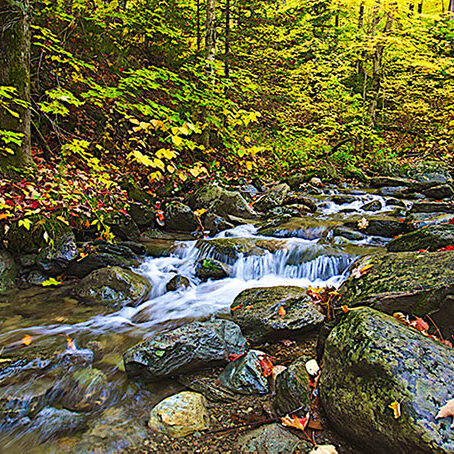
Forest environments
The GMNR, formerly exploited for its forests, now remains relatively untouched by development. The previous owner of the area chose to collaborate with a conservation organization, and now this vast stretch of southern Quebec is protected in perpetuity. The area is of major importance for biodiversity, as its massifs ensure connectivity and provide essential habitat for species at risk.
Forest stands comprised of various species, depending on the altitude, make up 99 per cent of the GMNR. Its rugged terrain offers a variety of forest communities. Within the GMNR lies an exceptional forest ecosystem: an ancient maple forest estimated at about 210 years old and that shows no sign of human disturbance. The Nature Conservancy of Canada is proud to protect this beautiful, rare ancient forest.
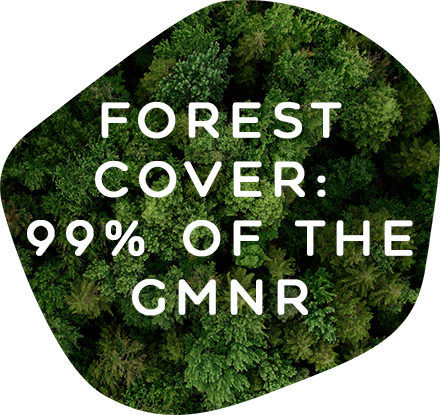
History
With the collaboration of the participants of the Table régionale de concertation des groupes écologistes, Parc Sutton published a leaflet promoting an expanded regional park. A very large part of the targeted mountain range (Sutton Mountains) is now protected by the GMNR.
History
1993
One region, one park
With the collaboration of the participants of the Table régionale de concertation des groupes écologistes, Parc Sutton published a leaflet promoting an expanded regional park. A very large part of the targeted mountain range (Sutton Mountains) is now protected by the GMNR.
1994
Forest properties for sale
Following the community’s mobilization to protect two forest blocks for sale by forestry company Domtar (Nine Holes and Fullerton Pond sectors) and the creation of the Mont Echo Conservation Association, (MECA), the Nature Conservancy of Canada considered their acquisition (Gratton, 1994).
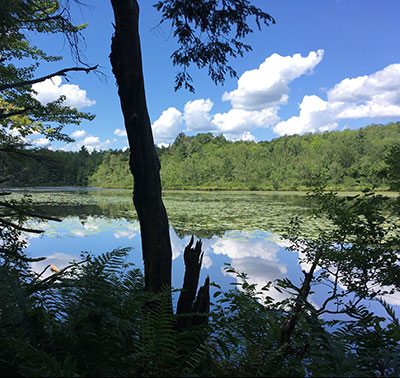
2000
Study on conservation issues surrounding the Sutton Mountains
Under the guidance of the Ruiter Valley Land Trust, a study revealed the remarkable ecological value and importance of developing a conservation strategy for the Sutton Mountains (Gratton et al., 2001).
2001
First ownership acquisition
NCC acquired the “Johnston” property on the southern slope of the Round Top. This launched what would become one of the largest privately held conservation projects in Quebec.
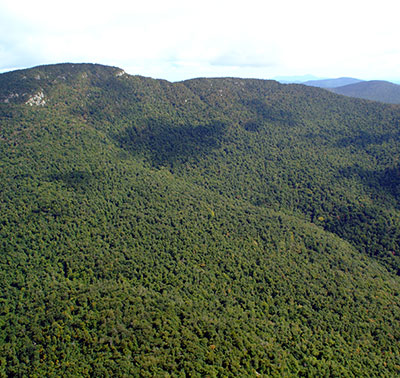
2002
Creation of Appalachian corridor
A regional organization is created, with the mandate to promote conservation in the Appalachian Mountains. It would eventually become an unwavering partner of NCC’s, in particular by playing a major role in mobilizing stakeholders and raising awareness among local communities on the protection of this natural legacy.
2004
Cross-border conservation strategy
The Domtar property, at just over 40 km2, is one of the largest acquisitions by NCC in Quebec, to date. It was acquired through contributions from both levels of government, businesses, foundations and private donors. This acquisition allowed for protection of the cross-border corridor.
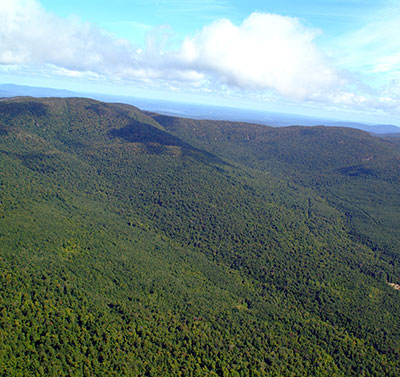
2005
Establishment of the Interim Management Committee
An Interim Management Committee was created to plan the first stewardship activities on the natural area, which would become the GMNR. The committee’s implementation was entrusted to the Appalachian Corridor. The committee also managed communications with the public.
2007
First management plan
Appalachian Corridor carried out a development project aimed specifically at promoting access to the area for hiking and species observation near Potton. This project just completed the Parc d’environnement naturel de Sutton’s and Sentiers de l’Estrie’s trail network.
2008
Development project
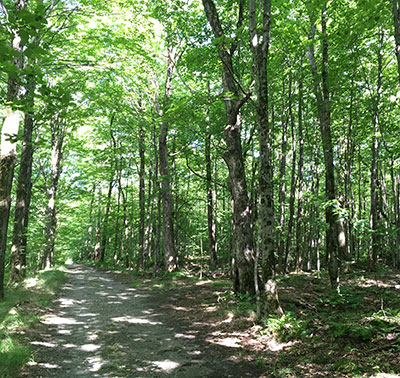
Appalachian Corridor carried out a development project aimed specifically at promoting access to the area for hiking and species observation near Potton. This project just completed the Parc d’environnement naturel de Sutton’s and Sentiers de l’Estrie’s trail network.
2009
Recognized nature reserve status
Quebec government granted the area the status of a nature reserve. It was then designated as the Green Mountains Nature Reserve (GMNR). Over the course of several years, the addition of properties increased its area from 48 km2to nearly 78 km2.
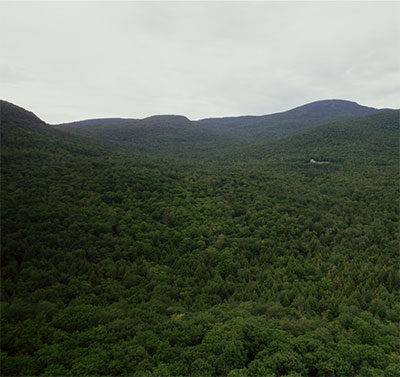
2012
Partner consultations
Consultation with several partner organizations began for the GMNR master plan.
2021
Creation of an Accès-Nature coordinator position
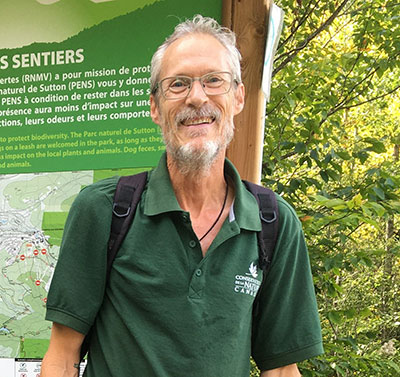
A full-time position was created, responsible for monitoring the GMNR, raising public awareness of conservation issues, and coordinating with local partners and trail managers.
